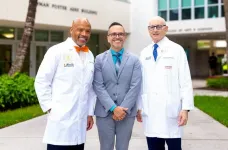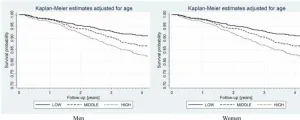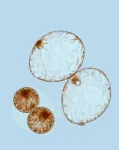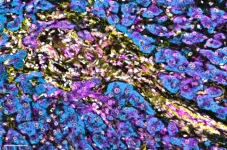(Press-News.org) Demonstrating its commitment to excellence as a member of the Association of American Universities and number one in the state for National Institutes of Health (NIH) funding, the University of Miami has pledged to invest more than $30 million to bolster basic science research that will target neuroscience and aging, some of the most complex conditions confronting the United States population, including in South Florida.
The investment over the next five years will create a new program in computational biology within the Leonard M. Miller School of Medicine and build collaborations across multiple University departments and institutes, including the Department of Psychology, the Frost Institute for Chemistry and Molecular Science, and the Frost Institute for Data Science and Computing.
University of Miami CEO and acting president Joe Echevarria views the University’s investment in basic science research as an example of mission fulfillment for the University, which resulted from teamwork across its schools and colleges initiated this summer.
“Our focus is on delivering world-class education, research, and patient care,” said Echevarria. “This investment, which is essential to progress on all three of those fronts, will ultimately benefit the population we serve—patients, students, and the wider community.”
While translational medicine, the providence of many academic health institutions, works to “translate” discoveries from basic science research into clinical applications, basic science research makes those fundamental discoveries. An increased focus on basic science research at the University of Miami increases the potential of findings that revolutionize science, shape the future of clinical interventions, and provide unique opportunities for students pursuing careers in science and the healing professions.
“This investment, involving critical study in the areas of neuroscience and aging, exemplifies the University of Miami’s long-term commitment to impactful research that benefits society,” said Guillermo “Willy” Prado, interim executive vice president for academic affairs and provost.
The Miller School anticipates that the funding will help attract scientific luminaries in neuroscience and aging and more effectively fulfill its mission of delivering high-quality patient-centered care.
“We’re investing in fundamental research in neuroscience and aging because that’s an area where we can truly be distinctive and impactful,” said Dr. Henri Ford, dean and chief academic officer of the Miller School.
“In part this is because of the location of Miami at the gateway to Latin America and the Caribbean,” said Ford. “And in part it’s because of the unique population we have here and the opportunity to translate fundamental discoveries into interventions that can be applicable to a diverse group of people, an advantage that most other institutions don’t enjoy to the same extent we do.”
Computational biology has emerged as a key area that would help advance neuroscience and aging research at the Miller School. Used to simulate and model biological systems, computational biology is a funding priority for the NIH. The program will advance neuroscience and aging research at the University by providing insight into the biological properties of proteins and cells that play a role in aging and neurogenerative disorders.
“This investment in basic sciences will elevate our institution, promoting team science and fundamental discoveries that can someday improve the health of our community,” said Dr. Stephen Nimer, executive dean for research at the Miller School and director of Sylvester Comprehensive Cancer Center.
Investing in an advanced computation infrastructure and scientific expertise will help University researchers create models from biological, genomic, and clinical findings. These models can be used to predict disease risk, aid in drug discovery, and tailor patient treatments. In fact, the Nobel Prize in Chemistry was awarded recently to researchers who are using computational biology to define protein structure and advance drug discovery, among other benefits.
“The benefits of this investment are unlimited. With luminaries at the helm, we will develop robust programs that initiate discoveries,” said Ford. “Those discoveries will then attract companies that want to invest and fund clinical trials that save lives—all while we are attracting more talent and teaching the next generation of scientists to carry this work forward.”
END
New initiative to fuel neuroscience and aging research
The University of Miami will invest $30 million to enhance research and innovation in basic science and the areas of neuroscience and aging.
2024-10-17
ELSE PRESS RELEASES FROM THIS DATE:
WashU researchers use genetics to find psychopathology risks
2024-10-17
When trying to understand how genetic influences factor into youth behavior, researchers at Washington University in St. Louis have taken the “big trawl” approach, casting their net wide to pull in all the measured traits, behaviors and environments that make up who we are and examine associations with the genetic building blocks comprising risk for mental health problems.
This cutting-edge methodology has turned up valuable new insights into factors related to psychopathological genetic risk, ...
Fibroblast growth factor 21 and survival in the elderly: Polsenior2 study results
2024-10-17
“Of note, participants with high serum levels of FGF21 more frequently had metabolic complications, such as hypertension, obesity, diabetes, hypercholesterolemia, and hypertriglyceridemia.”
BUFFALO, NY- October 17, 2024 – A new research paper was published in Aging (listed by MEDLINE/PubMed as "Aging (Albany NY)" and "Aging-US" by Web of Science), Volume 16, Issue 19 on September 18, 2024, entitled, “Fibroblast growth factor 21 inversely correlates with survival in elderly population – the results of the Polsenior2 study.”
As ...
Plankton balloon to six times their size in newly discovered mode of oceanic travel
2024-10-17
Many plankton journey from the cold, dark depths of our oceans to the surface, only to eventually drift down again into the darkness in a perpetual rhythm. Yet, how single-celled phytoplankton, most of which have no appendages to help them swim, make this pilgrimage has remained a mystery. In a paper publishing October 17 in the Cell Press journal Current Biology, researchers describe a species of bioluminescent phytoplankton, called Pyrocystis noctiluca, that balloons to six times their original size of a few hundred microns. This massive inflation allows the plankton to journey up to 200 meters toward the ocean’s surface to capture sunlight, then ...
Repurposing drugs to eliminate cellular origins of brain tumors
2024-10-17
Glioblastomas are aggressive brain tumors with a median survival time of less than 22 months despite standard therapy including surgery, irradiation, and chemotherapy. It has become clear in recent years that not all cells within the brain tumor have an equal potential to divide and drive tumor growth. As such, a fraction of tumor cells called brain tumor stem cells (BTSCs) are thought to be the primary origin of tumor re-growth after surgery in addition to being resistant to standard treatments including chemotherapy and irradiation. Therefore, targeting BTSCs may be a way to effectively treat glioblastomas.
In an effort to rapidly identify ...
Biomarker may predict immunotherapy response in liver cancer
2024-10-17
It may soon be possible to determine which patients with a type of liver cancer called hepatocellular carcinoma would benefit from immunotherapy, according to a preclinical study by Weill Cornell Medicine investigators.
The study, published Oct. 17 in Molecular Cell, provides new insights into a pair of proteins, called p62 and NBR1, and their opposing functions in regulating the interferon response in hepatic stellate cells, a critical immune component in the liver’s fight against tumors. The study demonstrates that high levels of the immune-suppressing NBR1 in these specialized cells may identify patients who are unlikely to respond ...
Prevalence of glaucoma among US adults in 2022
2024-10-17
About The Study: This meta-analysis found that an estimated 2.56% of people 40 years or older have glaucoma, slightly more than estimated by previous studies. Black individuals are disproportionately affected. Prevalence estimates at the state and county level can help guide public health planning.
Corresponding Author: To contact the corresponding author, Joshua R. Ehrlich, MD, MPH, email joshre@umich.edu.
To access the embargoed study: Visit our For The Media website at this link https://media.jamanetwork.com/
(doi:10.1001/jamaophthalmol.2024.3884)
Editor’s ...
Effect of electric fans on body core temperature in older adults exposed to extreme indoor heat
2024-10-17
About The Study: Electric fan use did not lower peak core temperature in older adults exposed to extreme indoor heat. Reductions in end-exposure core temperature and heart rate were observed, but they were small and of questionable clinical importance. Neither exceeded previous suggestions for clinical significance. Consistent with recent modeling, these data do not support fans as an efficacious standalone cooling intervention for older adults in hot indoor environments (>33-35 °C).
Corresponding Author: To contact the corresponding author, Glen P. Kenny, PhD, email gkenny@uottawa.ca.
To ...
Buprenorphine/naloxone vs methadone for the treatment of opioid use disorder
2024-10-17
About The Study: Individuals receiving methadone had a lower risk of treatment discontinuation compared with those who received buprenorphine/naloxone. The risk of mortality while receiving treatment was similar between medications.
Corresponding Author: To contact the corresponding author, Bohdan Nosyk, PhD, email bnosyk@sfu.ca.
To access the embargoed study: Visit our For The Media website at this link https://media.jamanetwork.com/
(doi:10.1001/jama.2024.16954)
Editor’s Note: Please see the article for additional information, including ...
Astrobiology: Potential microbial habitats in Martian ice
2024-10-17
Dusty ice exposed at the surface of Mars could provide the conditions necessary for the presence of photosynthetic life, according to a modelling study. The findings, published in Communications Earth & Environment, suggest that ice deposits located in the planet’s mid-latitudes should be a key location in any search for life on Mars.
High levels of harmful ultraviolet radiation from the Sun make current life on the surface of Mars almost certainly impossible. However, a sufficiently thick layer of ice can absorb this radiation and could protect cells living below its surface. Any life in these conditions ...
IChF tribute to the chemical imagination: the Dream Chemistry Award
2024-10-17
The Dream Chemistry Award (DCA) is a one-of-a-kind competition dedicated to recognizing young scientists who dream of tackling fundamental problems in chemistry and related disciplines with visionary ideas. Established in 2013 by the Institute of Physical Chemistry of the Polish Academy of Sciences (IChF), the award aims to support emerging talents in realizing their scientific dreams. Since 2017, it has been organized jointly with the Institute of Organic Chemistry and Biochemistry of the Czech Academy of Sciences (IOCB Prague), with the finals alternating between Prague and Warsaw.
The Dream Chemistry Award empowers those pursuing ...
LAST 30 PRESS RELEASES:
NSF–DOE Vera C. Rubin Observatory spots record-breaking asteroid in pre-survey observations
Ribosomal engineering creates “super-probiotic” bacteria
This self-powered eye tracker harnesses energy from blinking and is as comfortable as everyday glasses
Adverse prenatal exposures linked to higher rates of mental health issues, brain changes in adolescents
Restoring mitochondria shows promise for treating chronic nerve pain
Nature study identifies a molecular switch that controls transitions between single-celled and multicellular forms
USU chemists' CRISPR discovery could lead to single diagnostic test for COVID, flu, RSV
Early hominins from Morocco reveal an African lineage near the root of Homo sapiens
Small chimps, big risks: What chimps show us about our own behavior
We finally know how the most common types of planets are created
Thirty-year risk of cardiovascular disease among healthy women according to clinical thresholds of lipoprotein(a)
Yoga for opioid withdrawal and autonomic regulation
Gene therapy ‘switch’ may offer non-addictive pain relief
Study shows your genes determine how fast your DNA mutates with age
Common brain parasite can infect your immune cells. Here's why that's probably OK
International experts connect infections and aging through cellular senescence
An AI–DFT integrated framework accelerates materials discovery and design
Twist to reshape, shift to transform: Bilayer structure enables multifunctional imaging
CUNY Graduate Center and its academic partners awarded more than $1M by Google.org to advance statewide AI education through the Empire AI consortium
Mount Sinai Health system receives $8.5 million NIH grant renewal to advance research on long-term outcomes in children with congenital heart disease
Researchers develop treatment for advanced prostate cancer that could eliminate severe side effects
Keck Medicine of USC names Christian Pass chief financial officer
Inflatable fabric robotic arm picks apples
MD Anderson and SOPHiA GENETICS announce strategic collaboration to accelerate AI-driven precision oncology
Oil residues can travel over 5,000 miles on ocean debris, study finds
Korea University researchers discover that cholesterol-lowering drug can overcome chemotherapy resistance in triple-negative breast cancer
Ushikuvirus: A newly discovered giant virus may offer clues to the origin of life
Boosting the cell’s own cleanup
Movement matters: Light activity led to better survival in diabetes, heart, kidney disease
Method developed to identify best treatment combinations for glioblastoma based on unique cellular targets
[Press-News.org] New initiative to fuel neuroscience and aging researchThe University of Miami will invest $30 million to enhance research and innovation in basic science and the areas of neuroscience and aging.




